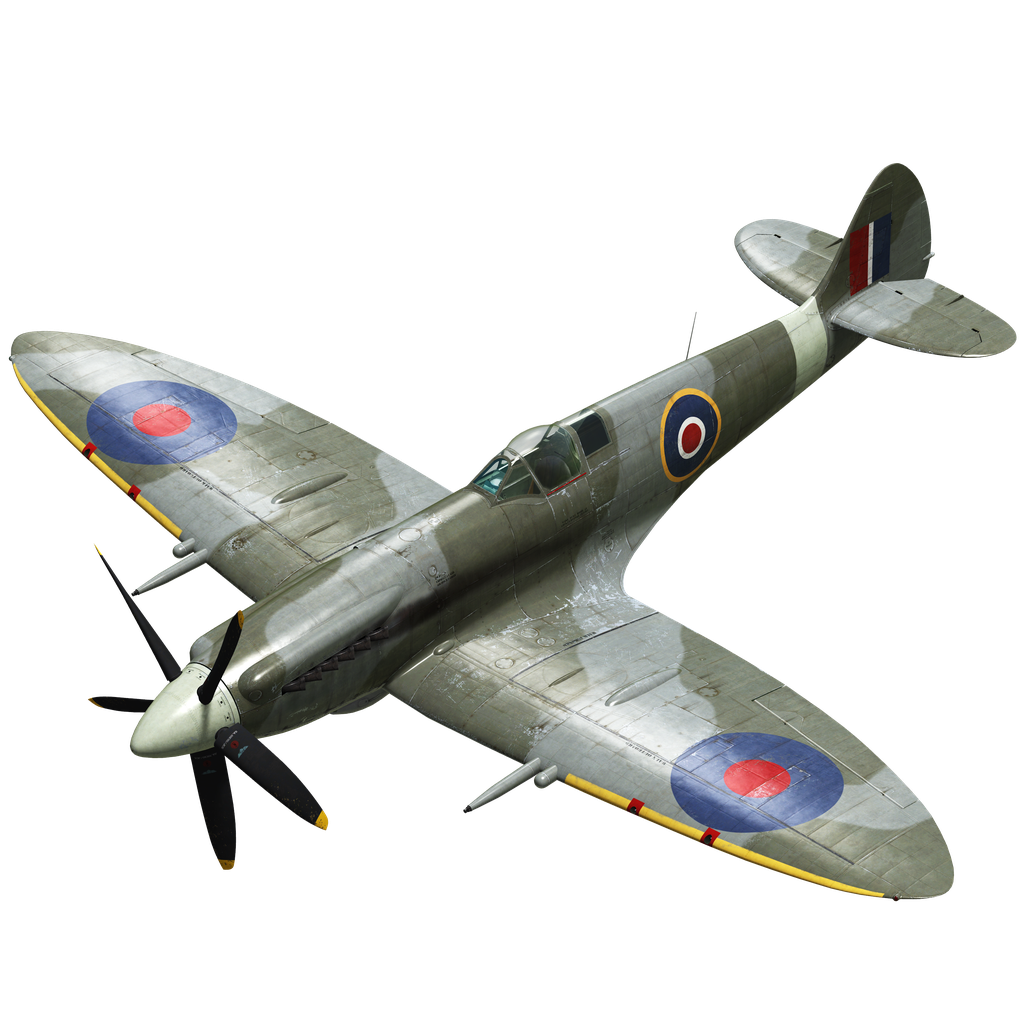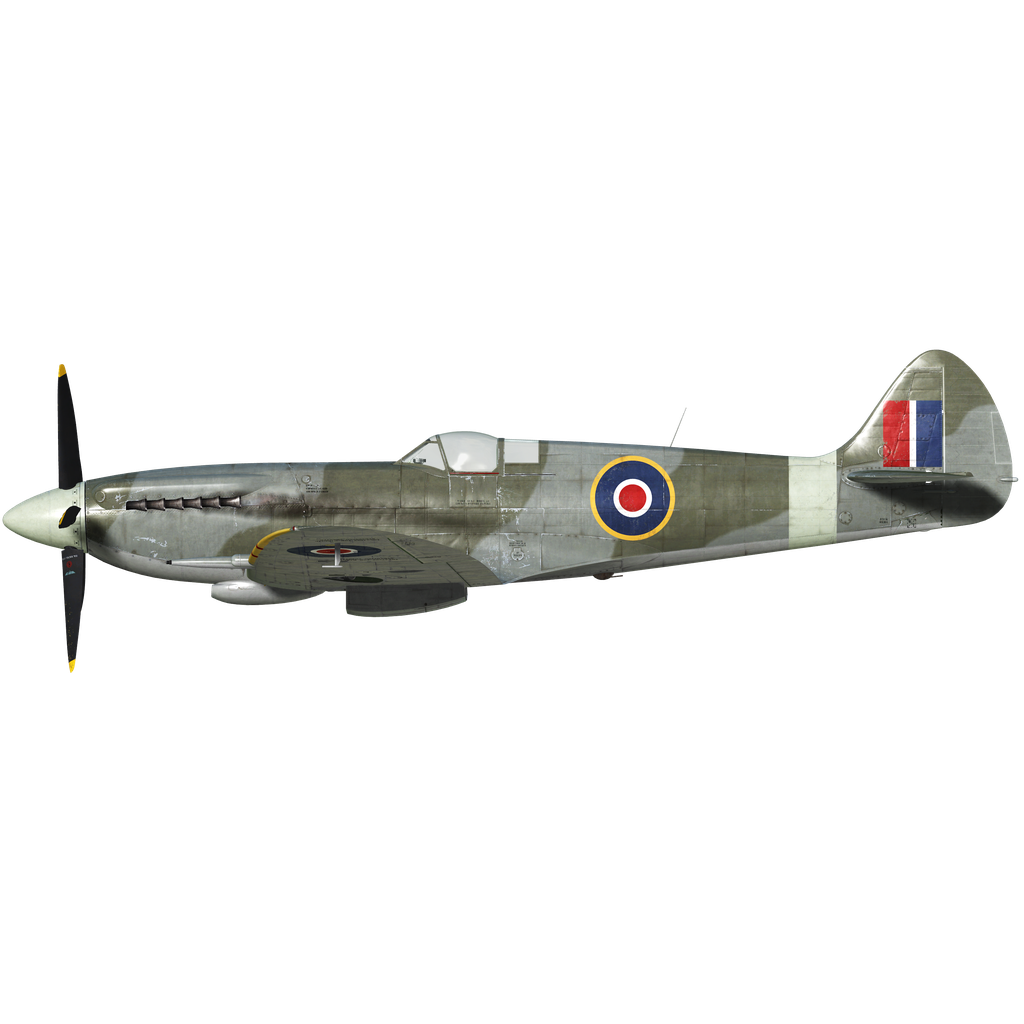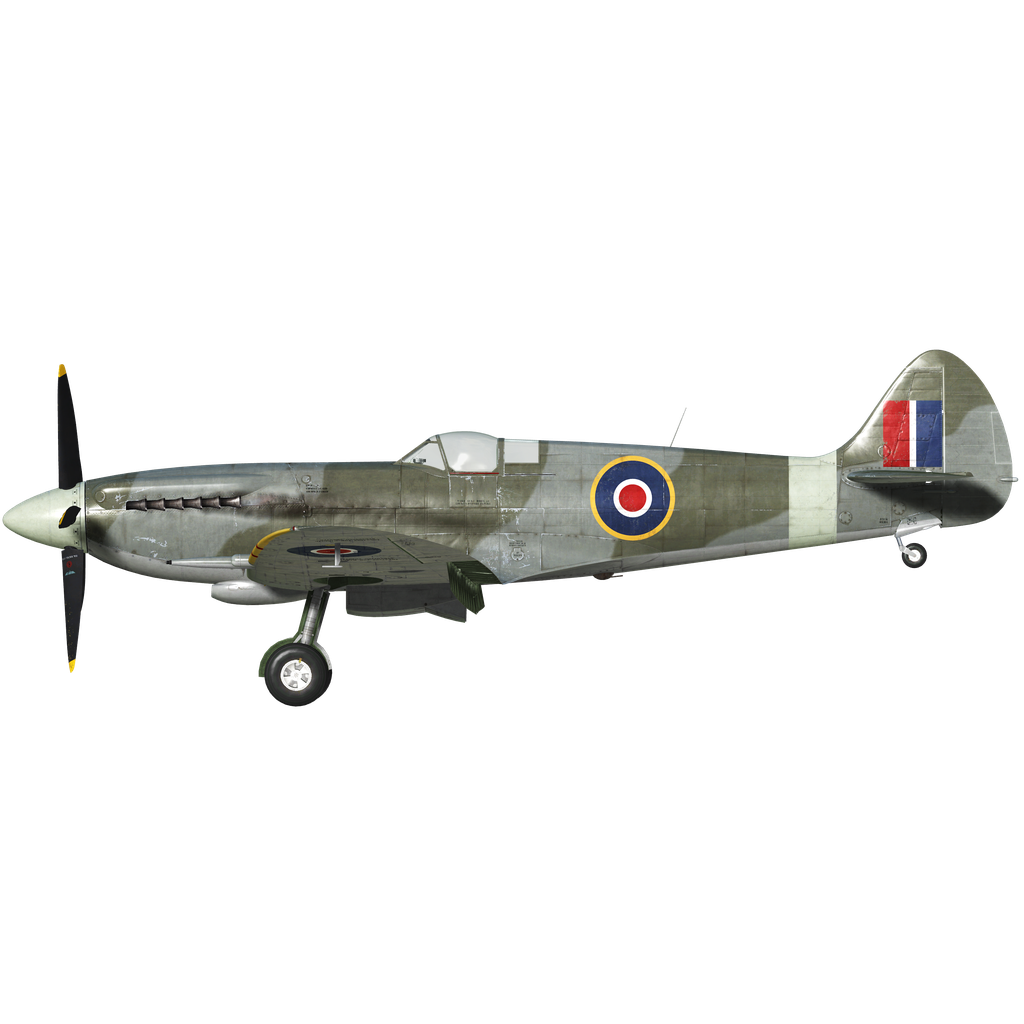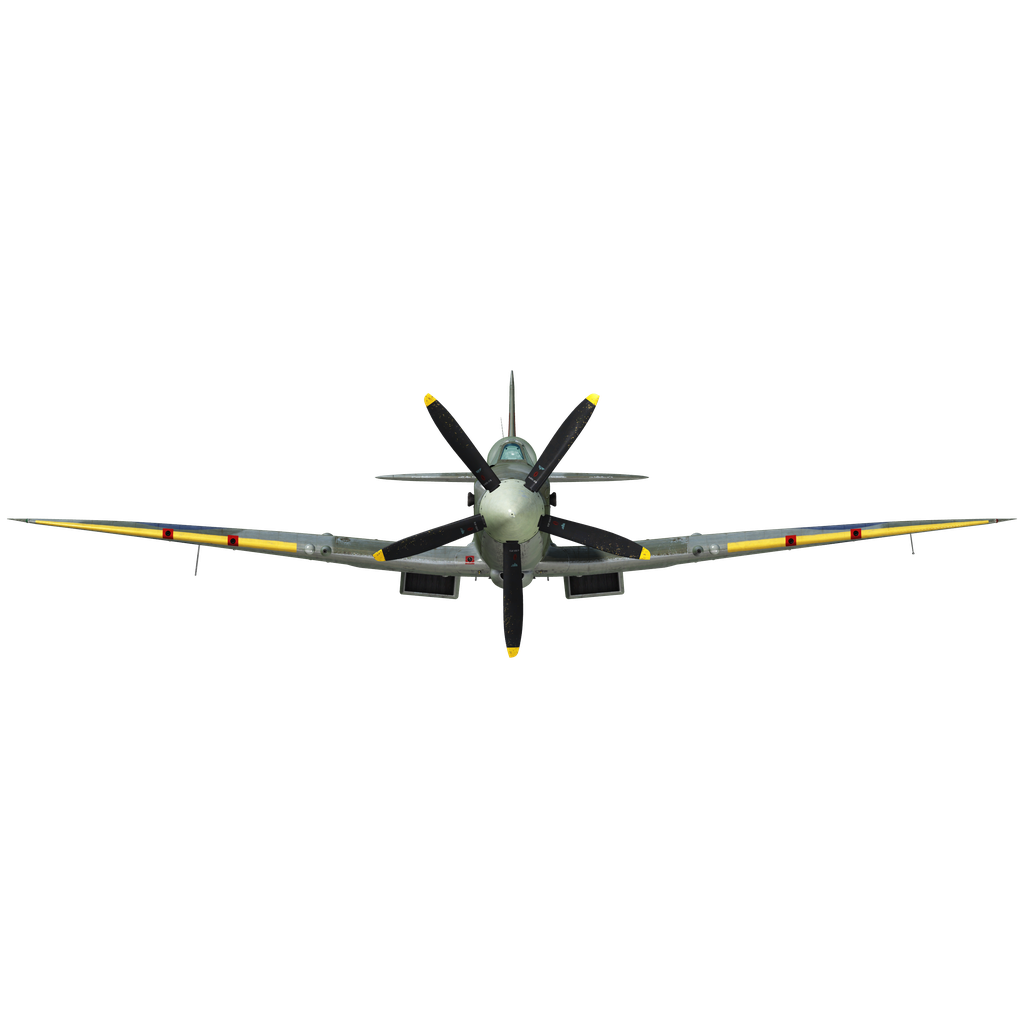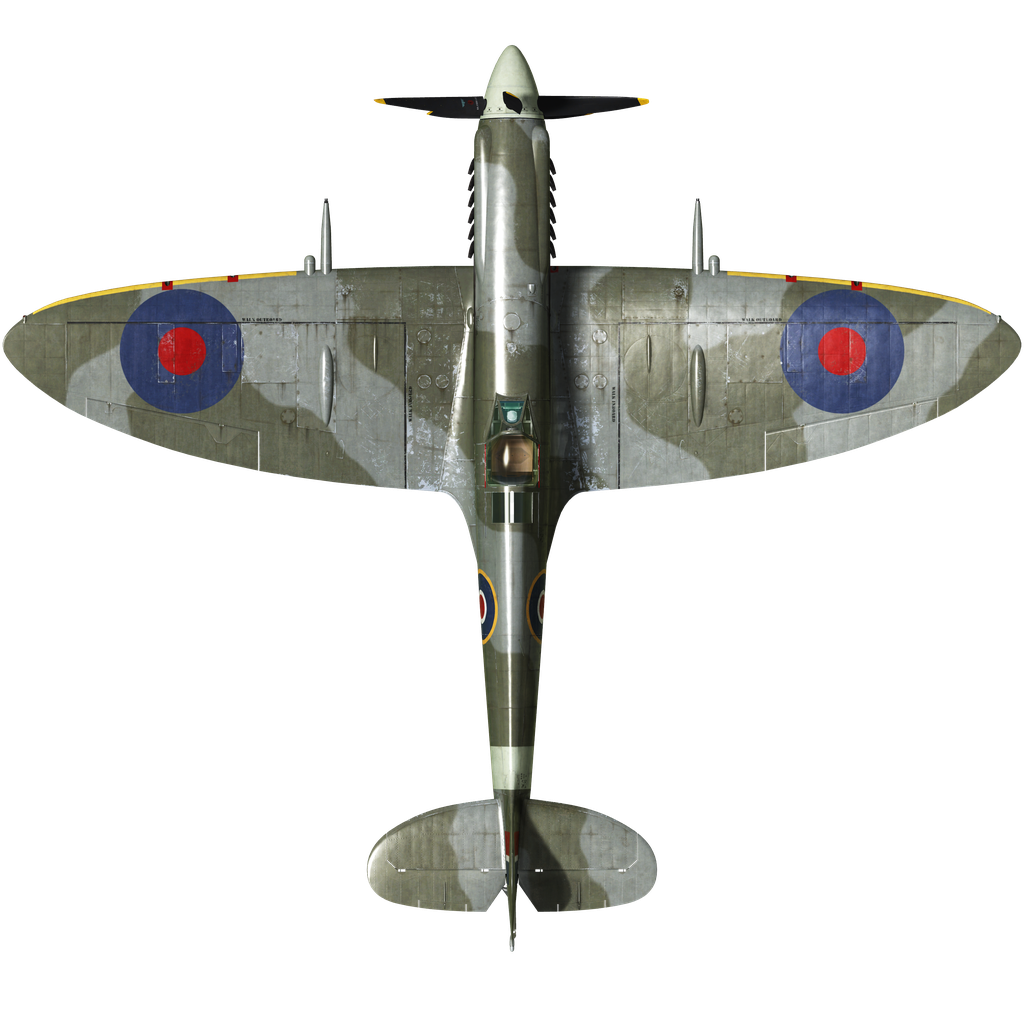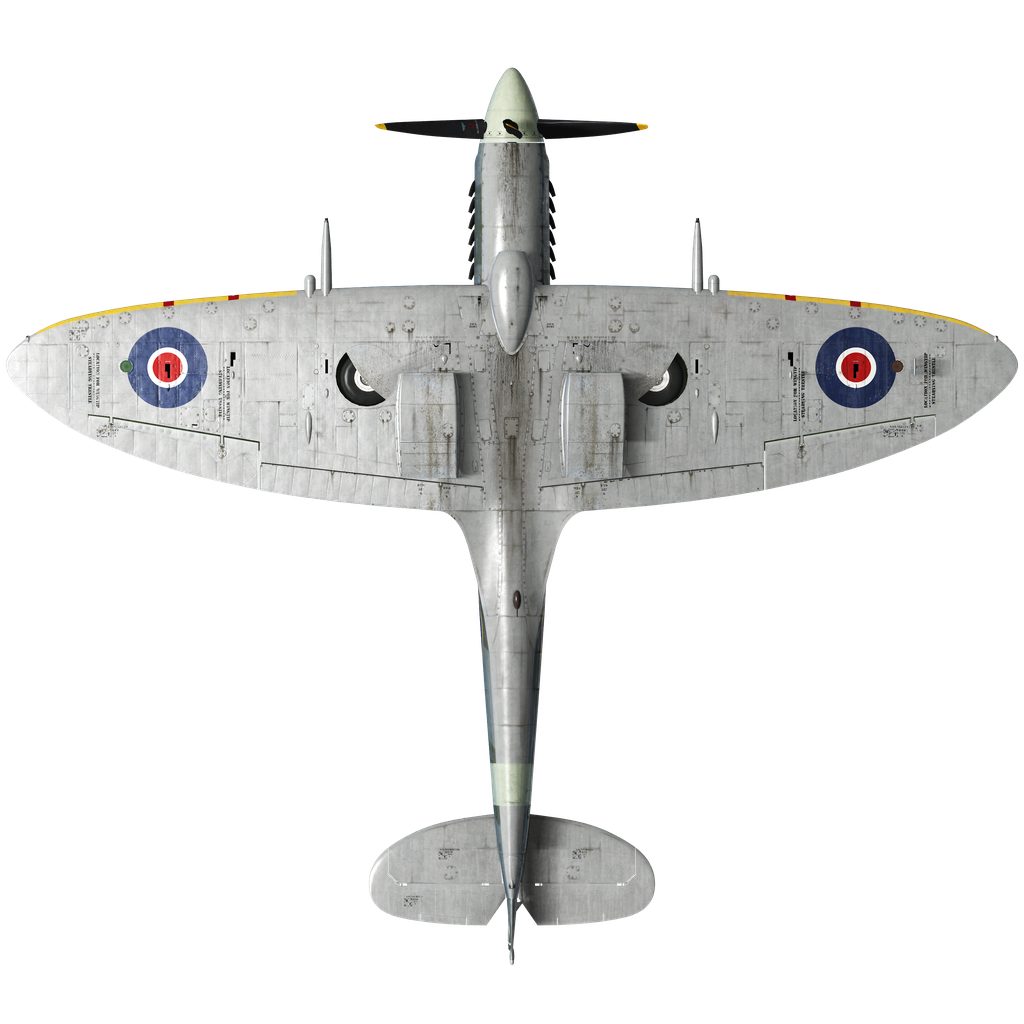In 1934, Supermarine, a company known for producing record-breaking sports aircraft, presented the Type 224 monoplane at the Royal Air Force (RAF) competition for a new fighter. However, the project lost the competition, and the designers began to rework it: the resulting aircraft was radically different from the original. The Spitfire was a fast and maneuverable interceptor fighter. It had an original elliptical wing, a closed cockpit, and the latest Rolls-Royce PV12 engine (later called Merlin). The armament was increased from four to eight machine guns, with four in each wing. The prototype first flew on March 6, 1936, and the first production aircraft on May 15, 1938.
With the experience of the air war, the fighter was continuously improved. More and more advanced and powerful engines were installed and the armament was increased. By 1943 Rolls-Royce had developed the new powerful Griffin engine. The water-cooled engine, of the same V-shaped design as the Merlin, had slightly larger dimensions and weight but developed much more power. This engine with a two-stage compressor was installed in a new model of the Spitfire - Mk.XIV.
The Spitfire Mk.XIV is a single-seat, single-engine, all-metal monoplane with a cantilevered low wing. During production, the wing was also modified — additional fuel tanks were fitted in the leading edge. There were both standard and shortened wing tips. In late 1944, a cut-down rear fuselage and a teardrop-shaped cockpit canopy were introduced to improve visibility.
The first fighters were equipped with Griffon 61 engines, but they were quickly replaced by Griffon 65 engines, which developed a takeoff power of 2035 hp and up to 2450 hp in emergency mode using 150 octane fuel.
The armament of the first series of the Mk. XIV was installed in the Type C "Universal Wing." The armament configuration could vary, but in this series, the standard armament included two Hispano cannons (belt-fed) and four .303 Browning machine guns. In addition, racks for two 250 lb bombs could be mounted under the wings. The aircraft could carry a 500 lb bomb under the fuselage.
The first production aircraft entered combat service in January-February 1944. An important combat mission for the aircraft was to patrol the English coast in search of V-1 rockets after their launch. Seven Spitfire XIV squadrons were involved in the hunt for V-1s, the most successful of which was No. 91 Squadron, which destroyed 184.
The Spitfire XIV did not participate in the Normandy landings and did not arrive in France until the fall of 1944. They were mainly used as high-altitude fighters to maintain the air supremacy already established. With a speed advantage over all enemy aircraft except jets, Spitfire XIVs were able to attack any air target, even shooting down several jet fighters.
These aircraft were also used as fighter-bombers; at the front, the plane's armament was sometimes supplemented with rockets. Four FR XIV reconnaissance squadrons also operated in Europe. Some fighters and reconnaissance aircraft were transferred to India before the end of the war, but all three squadrons that received them had not reached combat readiness by the time Japan surrendered.
Used sources:
K. G. Munson "British Aircraft of World War II" 1962
V. Kotelnikov "Spitfire" The Best Fighter of the Royal Air Force" 2019
Materials from the site airwar.ru
